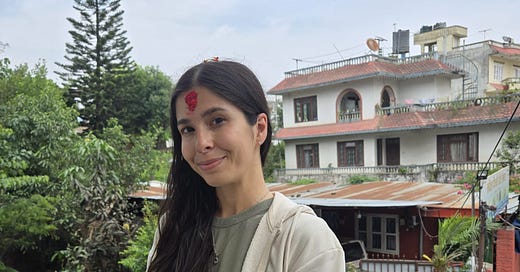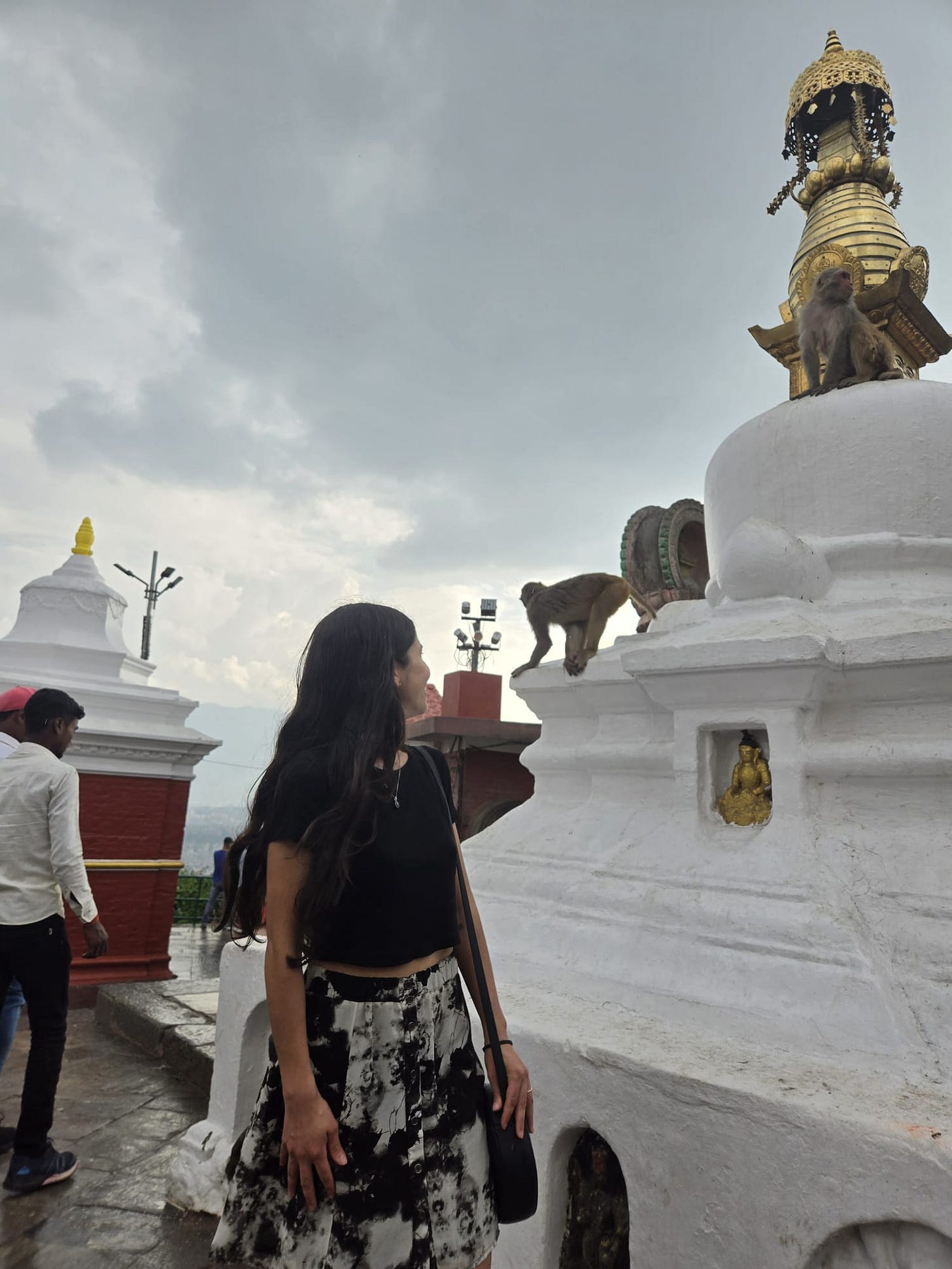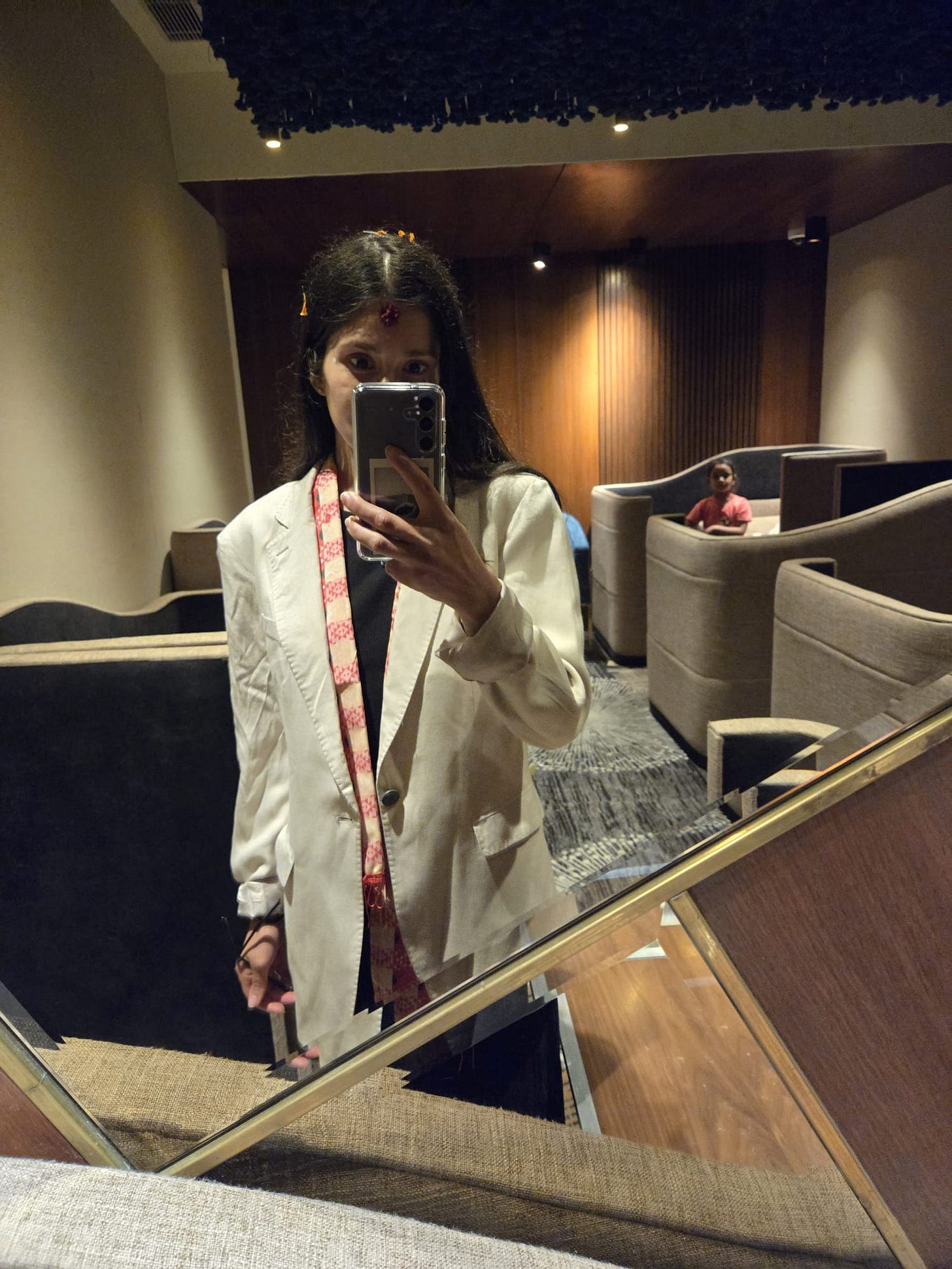It’s end-of-year recap time!
To honour the inevitable introspection that comes with the final moments of the year, I’ll be posting reflections about the main topics I write about for each week of December. This week’s theme is beauty (or perhaps beauty/identity). Consider it The Pastel Minimalist Wrapped.
Like any person of mixed ethnicity, I’ve struggled with my identity.
I’m sure we’ve all been there: not feeling like enough of any part of your ethnicity to truly belong.
I remember reading a piece a few years ago where the mixed author said that she finally felt 100% of both of her ethnicities, but I’d never quite felt that level of confidence. 50% just never felt like enough for me.
Until I finally visited my father’s homeland of Nepal.
I know it’s probably cheesy as hell, but it was the trip I needed to fully embrace my identity.
My experience as a mixed person has been somewhat unusual. I feel like most mixed people identify more strongly with the ethnicity they’re physically perceived as, but my upbringing made that difficult.
I’m half Nepali, half Russian, but I grew up in a household that was very much Russian. You see, my dad resents his own country, but has a deep love of Russian culture. Although I’ve spent my entire life being told I’m his physical copy, I didn’t know much about my Nepali side growing up. My dad never told me much about the country or its culture, never shared traditional dishes with us, never taught us the language, and never introduced us to our relatives. I knew a few basic things and started educating myself as an adult, but generally I felt a deep disconnect from that side of my ethnicity.
My mother, on the other hand, has never been shy about her Russian-ness. We ate Russian food, celebrated Russian holidays, watched Russian movies, listened to Russian music, embellished our home with traditional décor, and I even briefly attended a weekend Russian school to improve my grasp on the language, which I now speak fluently. You know, like any immigrant family where the parents can never fully separate themselves from their homelands, no matter how long they live in their new country.
Then there’s the element of global recognition. I mostly grew up in Canada, where a lot of people don’t even know about Nepal. So when I reveal my ethnic background, it’s like Nepali goes in one ear and out the other. Russian is all people hear. Even though my physical appearance means that I am usually perceived as brown — my skin tone does fluctuate depending on the weather, and my face especially gets pale when I don’t get enough sunlight.
For most of my life, I didn’t feel right calling myself brown — even when others did — because of the cultural disconnect I felt. I remember being surprised when a work contractor who didn’t know my name described me as “the Asian girl”, because I was so sure that I couldn’t solely be perceived as South Asian, no matter how dominant my father’s genes may be.
Then a few things happened.
I saw the closest version of my ethnic mix represented on TV for the first time (or at least, my first time). The character was Rani Rekowski on The Outlaws (which was actually released in 2021, but I didn’t get around to watching it until this year — unrelated, but it’s a fantastic show that I highly recommend), who was half Sri Lankan, half Polish. She confidently called herself Asian, though she also had a very Slavic parent. If Rani could do it, why couldn’t I?
I went to Nepal for the first time.
I wondered how I would be perceived by locals before the trip. As much as I look like my dad, I do think I have that ethnic ambiguity that many mixed people have. But when I got to Kathmandu, I strangely felt like I fit in.
Upon meeting family friends and even strangers, I was given the nickname “daddy’s face”. That was nothing new, but it gave me a comforting sense of acceptance.
When I was exploring Kathmandu without my father, I was often asked where I was from. Canada didn’t seem to suffice — upon explaining my background, I was given nods of understanding and told that I indeed had a Nepali face. I also quickly learned that I have a Nepali body. Everyone — men included — shared my petite stature. For the first time in my life, I was finding off-the-rack clothes that fit me perfectly, and I didn’t feel like my body type was abnormally small.
Then there were the little details I felt insecure about growing up. My asymmetrical hairline. My dark, abundant body hair. These things separated me from the fully white girls growing up, but in Nepal they were completely normal.
Of course, I wasn’t perceived as local local. My embarrassingly basic level of Nepali, fear tentativeness while crossing roads, and inability to haggle made it clear that culturally, I was from elsewhere. But in terms of physicality, I felt like I was home. All of a sudden, everything I ever questioned about my appearance in the west just made sense to me. It was night and day compared to my visits to Russia, where I’ve jokingly been called a Canadian who just happens to speak Russian. It’s not that I was treated poorly or cruelly, but the acceptance or sense of belonging just wasn’t there.
Going to Nepal made me realize that despite my upbringing and my white mother, I do have the right to call myself a brown woman. And it’s made me feel so much more at peace with my identity and appearance. The things I now love most about my appearance come from my South Asian side: my long, dense hair. My skin, that thrives in the sun. Even my height and body, which I used to feel so insecure about growing up.
I’ll admit, I’ve also had to unlearn euro-centric beauty standards over the years to get to this point of self-love and self-acceptance. It’s only in recent years that South Asians have been positively portrayed in the media — thank you, Mindy Kaling & co. I didn’t grow up hating my skin tone or my colouring (though I did go through a blonde phase), but I not-so-secretly enjoyed that I could claim my Russian side for quite a long time.
Now, I see the beauty in my brownness — and I’ve never felt more comfortable in my own skin.
Thank you for reading! If you’re mixed, I’d love to know if you’ve ever struggled with your identity or appearance.
And if you’re looking for more insights, you know what to do ↓








I'm also mixed (my mom is Chinese and my dad is Canadian -- English, Irish and Scottish ancestry), and I've always been asked where I'm from, despite my Chinese grandparents having both been born in Canada. As a child I was very self-conscious of my background, especially as the small town I was living in had no one of any other ethnicities aside from white, although today I welcome the conversation it brings and find most people are intrigued. Like you, I also didn't see myself represented in the media (and still really don't) and hope this continues to change as we see more diversity in people with positions of authority and audiences demanding better representation.
How beautiful to learn this about you :)
I am Indian by birth but was raised abroad so I have always felt like "the other" in the place I grew up in and when visiting India. Like I was never enough for either of them even though I consider myself Indian. I felt at home in Turkey from the very first time I visited, though. Afterwards, I discovered I have both middle and west Asian DNA in addition to my Indian heritage and that made so much sense. Sometimes home and identity make themselves known to us through feelings and glad visiting Nepal did that for you :)